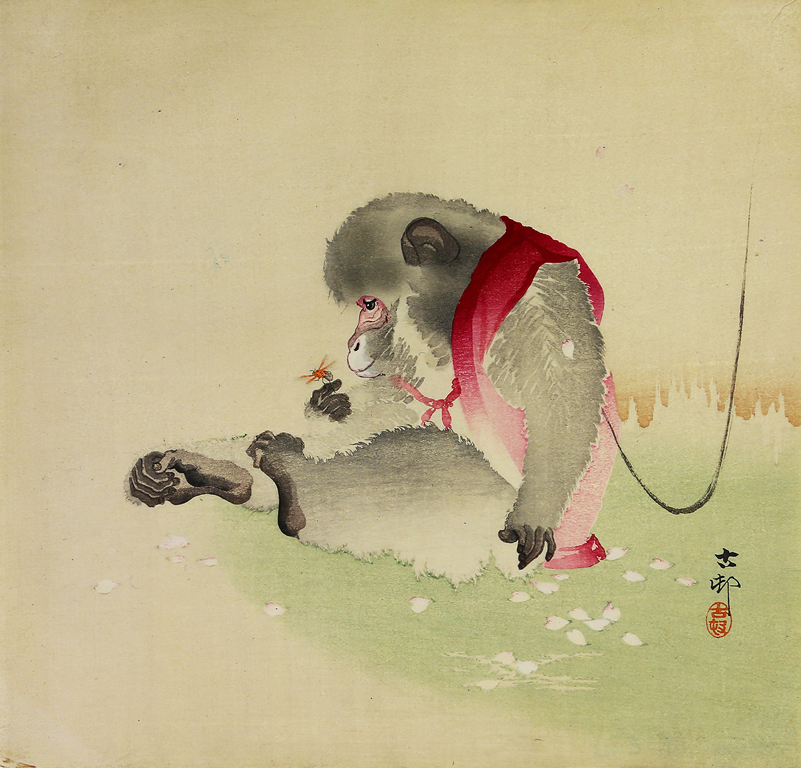
The monkey is a frequent symbol in Japanese culture, particularly in Buddhist and Shinto traditions.[1] Tendai Shinto-Buddhism is centered around the shrines at Kyoto’s Mount Hiei where the main deity is Sanno (山王), or “mountain king”.[2] His messenger Tsukai (使い) is a monkey.[3] In Tendai doctrine, three is an auspicious number and it is believed that the story of the Three Monkeys – see no evil, hear no evil, speak no evil – originated at Mount Hiei.[4]
Ohara Koson’s print depicts a Japanese Macaque, identifiable by its brown-grey fur, red face, and short tail.[5] Monkeys inhabit all the islands of Japan except for Hokkaido, but urbanization has pushed them into mountainous areas.[6] It is said that the wilds of the mountains are a crossroads between the world of humans and the world of deities, or kami (神), and that monkeys serve as divine messengers between the two worlds.[7] Monkeys are also believed to protect against disease, guard against demons, and assist fertility.[8] The color red, worn by the monkey in this print, is symbolic of this power. In the Edo period (1603-1867), monkey worship was at its peak; but it remains common today to find stone statues of monkeys at shrines and temples.[9] Monkey key chains are also distributed at shrines as good luck charms, and these often incorporate the color red.[10]
Ohara Koson, who lived and worked after the Edo period, is known for his humorous and playful depictions of animals and for his bird and flower prints (kacho-e).[11] Building on the international success of Edo period ukiyo-e prints, Koson’s woodblock prints were produced primarily for a Western market.[12]
-Mandy Prue, Class of 2016
Sources:
[1] Mark Schumacher, “Monkey in Japan”, Japanese Buddhist Statuary, onmarkproductions.com.[2] Id.
[3] Id.
[4] Id.
[5] “Monkeys in Japanese Culture”, America Pink, america.pink.
[6] Id.
[7] Dentsdelion Antiques Newsletter XIV, no. IV (September/October 2014), dentsdelion.com.
[8] Mark Schumacher, “Monkey in Japan”.
[9] Id.
[10] Id.
[11] “Ohara Koson”, Hanga Gallery, hanga.com.
[12] Id.
